Hammocking is one of the best ways to relax and delight in the simplicity of life. There’s nothing like the feeling of freedom that comes from sinking in to a body-conforming swing while you’re suspended in thin air. People of all ages love hanging out in hammocks both indoors and outdoors, and you should try it if you haven’t yet. Here is a complete hammocking guide to help you learn all about this endearing pastime that humans have enjoyed for centuries!
Table of Contents
FAQ
What is hammocking?
Simply put, hammocking is the art of lounging in hammocks. It can be done anywhere one is set up, and all you have to do is kick back and relax. Many love the cocoon-like experience it provides and enjoy resting or other leisure activities as they hammock.
How do I use this hammocking guide?
You can use the table of contents above to quickly navigate through our hammocking guide. If you’re a complete beginner, we recommend starting at the beginning and reading all the way through. You’ll learn everything you need to know about hammocks and more!
What should you wear in a hammock?
Wear comfortable clothing that is weather-appropriate. There are no set rules for attire, because hammocking is all bout rest and relaxation. Dress in whatever makes you feel good about yourself and cozy in your own skin.
Can you hammock in national parks?
Yes, you can hammock in national parks unless there are specific rules prohibiting it. Many states are silent on the issue and do not regulate hammock usage in parks; however, some ‘green states’ have strict rules against them. Colorado, for example, does not allow hammocking in Denver and many state parks. Experts fear it can cause tree damage and eventually tree death. It’s best to ask a park guide before setting up if you aren’t sure, because each park has their own policies.
What is extreme hammocking?
Extreme hammocking is performed hundreds (sometimes thousands) of feet off the ground. For example, extreme hammockers may climb a mountain and mount their hammocks on wires hung between 2 peaks. It’s dangerous, and we don’t recommend it. However, if you consider yourself an ‘adrenaline junky,’ it may be the thrill you’ve always wanted.
Are hammock beds good for dogs?
That’s a matter of personal preference!

Hammocking Tips and Principles
Damage-free hanging
When hammocking, avoid damaging the environment (especially in public). Some places prohibit hammocking due to bad experiences with people tearing down plants, bushes, and trees trying to find a perfect hanging spot. There are good and bad setup locations as well as good and bad techniques for hanging hammocks you should consider when setting up. You’ll learn more about them later in this guide.
Types of Hammocks
Obviously, you need a hammock before you can go hammocking. There are many options out there, and you’ll want to choose one that works for your specific needs. Ask yourself some questions…do I want a permanent hammock? Do I want one that’s easy to set up on-the-go? After you’ve taken your preferences into account, it’ll be much easier to decide which is best for you. Here the typical hammocks you’ll find while shopping:
Portable nylon hammock
These hammocks are easy to throw in a bag and take anywhere. They’re made of thin–but strong–nylon and fold into drawstring bags which are sewn into the sides. They make excellent camping and hiking hammocks, because they’re lightweight and don’t take up much space.
Portable cotton hammock
Cotton hammocks are excellent for permanent or portable hammocking. They’re super comfortable and often feature beautiful patterns and designs. You can take them camping or hiking with you, but they’re a little heavier than nylon and can weigh you down.
Hammock swing
Hammock swings are essentially hanging chairs. They come in many styles and are best for permanent setup on a patio or in a backyard. You can even hang them indoors if you have enough space, but this requires handiwork and proper placement.
Hammock with spreader bars
These hammocks have bars on either end to keep them open. They’re easy to hop into on a whim since you don’t have to open them up to get in. The spreader bars aren’t portable-friendly, so these are best for permanent backyard setups. They’re made out of many different materials.
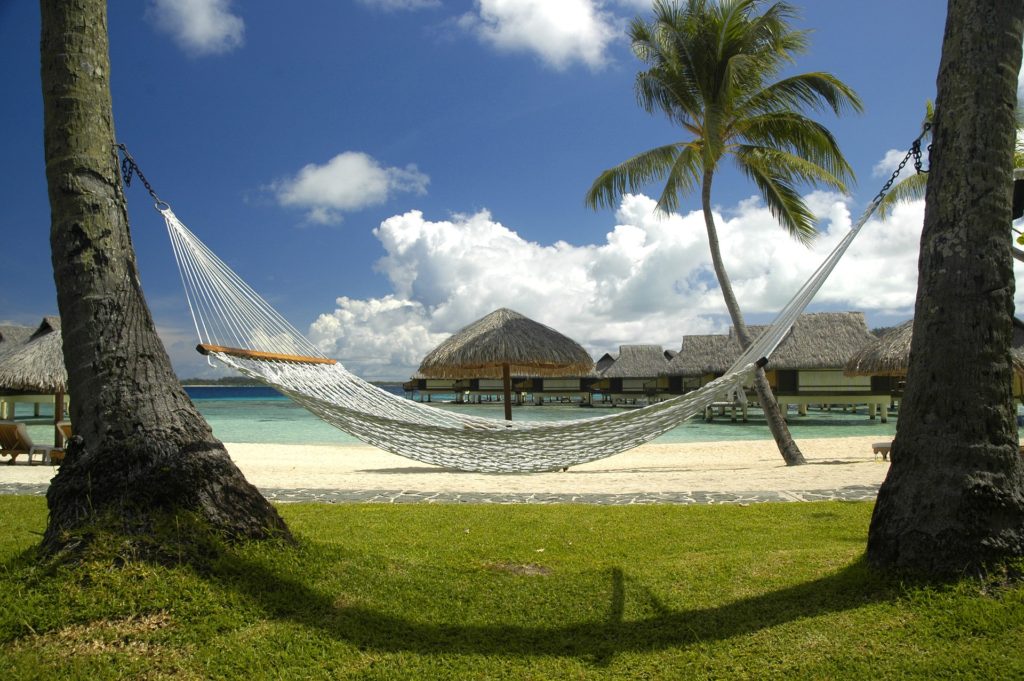
Choosing Where to Go Hammocking
Backyard
You don’t have to travel far to go hammocking. If you have a backyard with trees or posts to hang a hammock on, you can set up a permanent one for the ultimate relaxation station. You can even install a hammock swing if you have a sturdy anchor point in a high place. They’re just like tire swings and make a great option for those who prefer to sit rather than lay down.
Parks
Parks are a great place for hammocking, and some even have designated hammocking stations. You can easily pack a portable hammock, head to your nearest pack, and set up in a desirable location. It’s a good idea to steer clear of high-traffic areas if you want to experience peace and tranquility.
Campgrounds
You’ll find excellent places to hang your hammock at campgrounds. Many people go hammock camping, and you may find sites made specifically for it. Campgrounds are full of trees, so it should be easy to find a suitable location for hammocking. If you plan to set up in the middle of the woods, you may want to bring some bug spray with you (or a bug net).
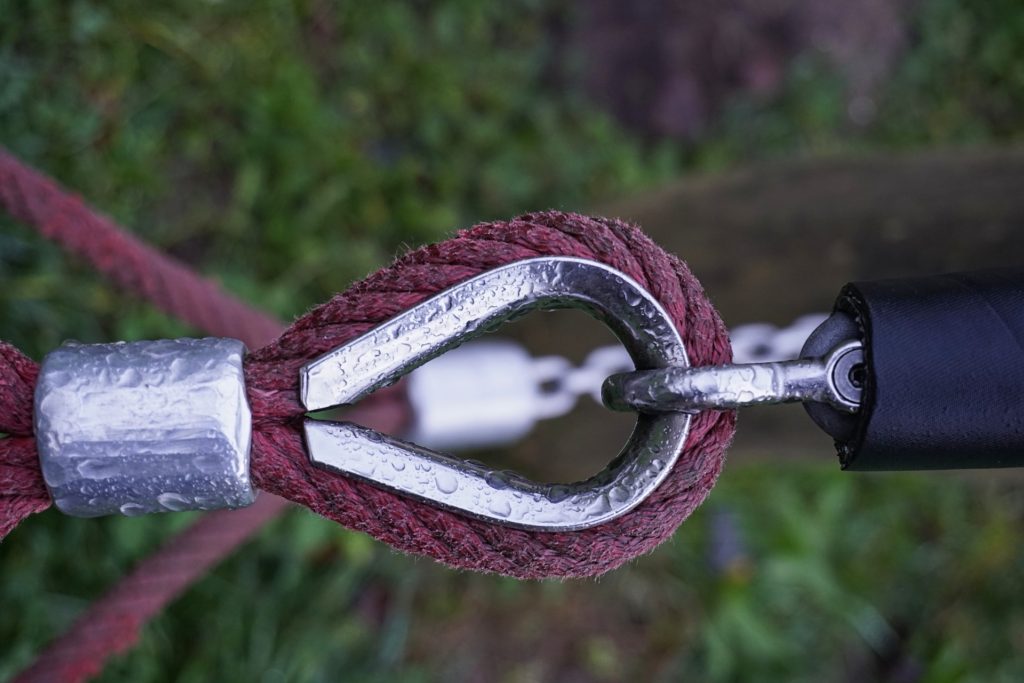
Picking Your Hammock Gear
Hammocks
Choosing you hammock is a lot of fun, because it’s your opportunity to express your individuality. There are you many options out there with color combinations that make deciding difficult at times. Refer to the ‘Types of Hammocks’ section above if you’re not sure which style will work best for you.
Suspension systems
Most portable hammocks have carabiners on each end, and you’ll need a suspension system to clip them to. Here are the common systems people use for hammock hanging:
Chains
Some use metal chains to mount their hammocks, and this is a great option for hanging hammocks indoors. Chains are the sturdiest option but also the most damaging to trees outdoors. They will dig into tree bark and leave marks if left in place over time. It’s not a damage-free hammock-hanging method, and for this reason, they shouldn’t be used in public locations.
Rope
Rope is cheap and effective for hammock hanging, and many people use it as their go-to when they’re in a pinch. You can’t go wrong with rope as long as you pick a size that’s strong enough to hold your weight. The only downside is it tends to weaken over time, especially when left out in the elements. It’s a great short-term solution for hanging your hammock, but you may want to consider other options if you’re looking for something that will hold for a long time.
Straps
Straps wrap around your mounting posts and stay in place once pulled taut. Most have loops you can clip your hammock carabiners to for easy hanging. They’re definitely worth it, as they’re made specifically for hammock hanging. They reduce your setup time to 5 minutes max.
Accessories
Hammock stand
Hammock stands will allow you to set up virtually anywhere. They come in handy when you don’t have a suitable place to mount you hammock.
Rain fly
Rain flys will prevent bad weather from ruining your hammocking experience. They hang on a line above your hammock and anchor to the ground at each corner. It’s a great accessory to have if you plan on going hammock camping and need protection against harsh conditions.
Bug net
If bugs are a problem in your neck of the woods, you may want a bug net to keep you safe. Mosquitoes are particularly troublesome, and a net will keep them off of you. They zip open and closed to allow you easy entry while safeguarding you from pesky critters.
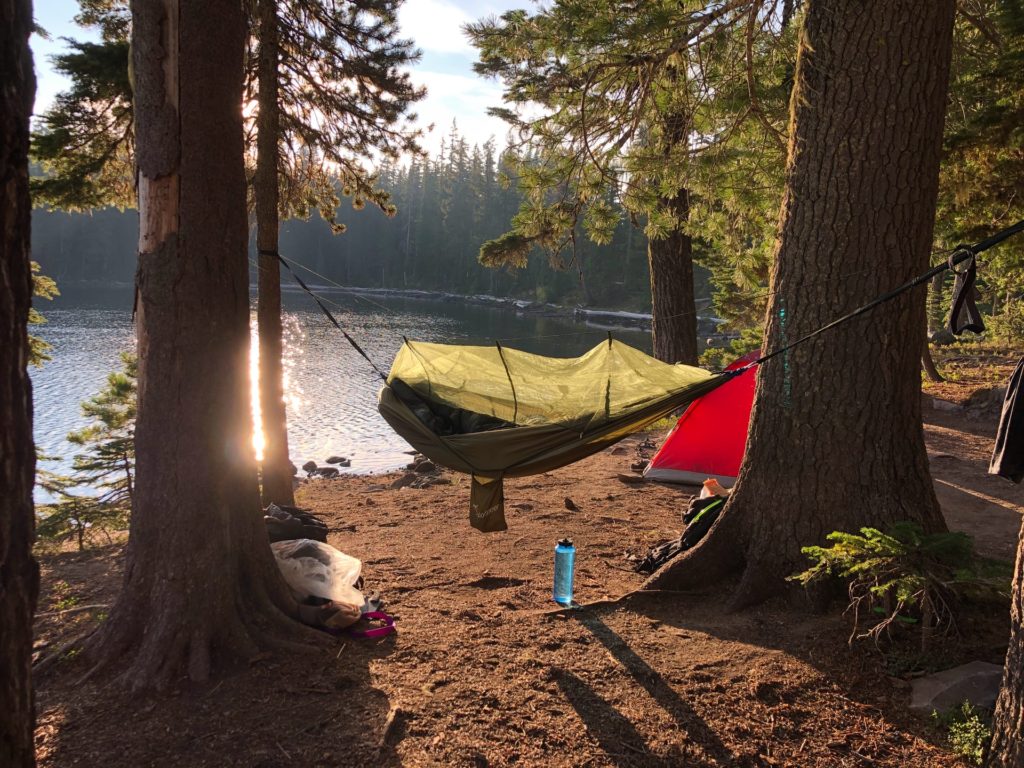
How to Hang a Hammock
1. Find your hammock posts
Before you start hammocking, you need to find reliable posts to hang your hammock on. Ideally, you want to find 2 mounting points that are 13-17 feet apart. If you’re outside, these can be trees, tree limbs, wooden posts, or any other sturdy points you can find. Indoors, you can mount your hammock to wooden studs from the ceilings or walls. You can also use a hammock stand if no suitable mounting points are available. Once you find an appropriate location, you’ll need to install your suspension system.
2. Set up your suspension system
Your suspension system will anchor your hammock to the posts and hold it in place, and the process for setting it up will vary based on the materials you’ve chosen. Here are the techniques for each:
Chains
You’ll want to wrap chains around your posts and clip your hammock carabiner to links from either side. Some use quick clips to hold chains in place permanently. Either way is fine, and the method you choose is up to personal preference.
Rope
Rope requires knowledge of basic knots. You can use a variety of knots to hang your hammock, but we recommend the quintessential hammock knot. It’s designed for hammocks and creates loops you can clip your carabiners to.
Straps
Hammock straps are the simplest suspension system. All you have to do is wrap them around your posts, feed one end into the other, and clip your carabiners to them. They usually have multiple loops you can clip to for easy height and distance adjustments.
3. Hang your hammock
Once your suspension system is in place, it’s time to hang your hammock. All you need to do is clip your hammock carabiners to the suspension system you set up in the previous step. For best results, you’ll want to hang it 4-5 feet off the ground, because once you get in, it will sag a little. This height will provide you with good clearance and ensure you don’t hit the ground upon entry.
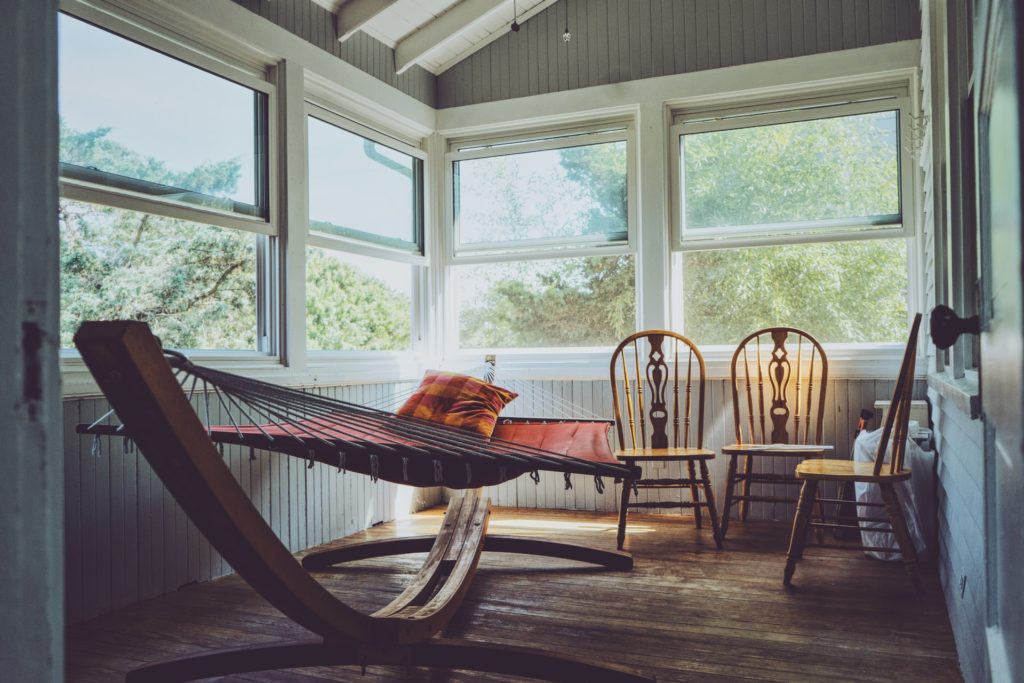
Final Words
Indoors or outdoors, you can enjoy hammocks wherever you are. It’s the ultimate form of relaxation for people who appreciate the simple things in life. Once you get comfortable, you won’t want to get back up. Take the time to experience life in a hammock, and you’ll love every moment of it.
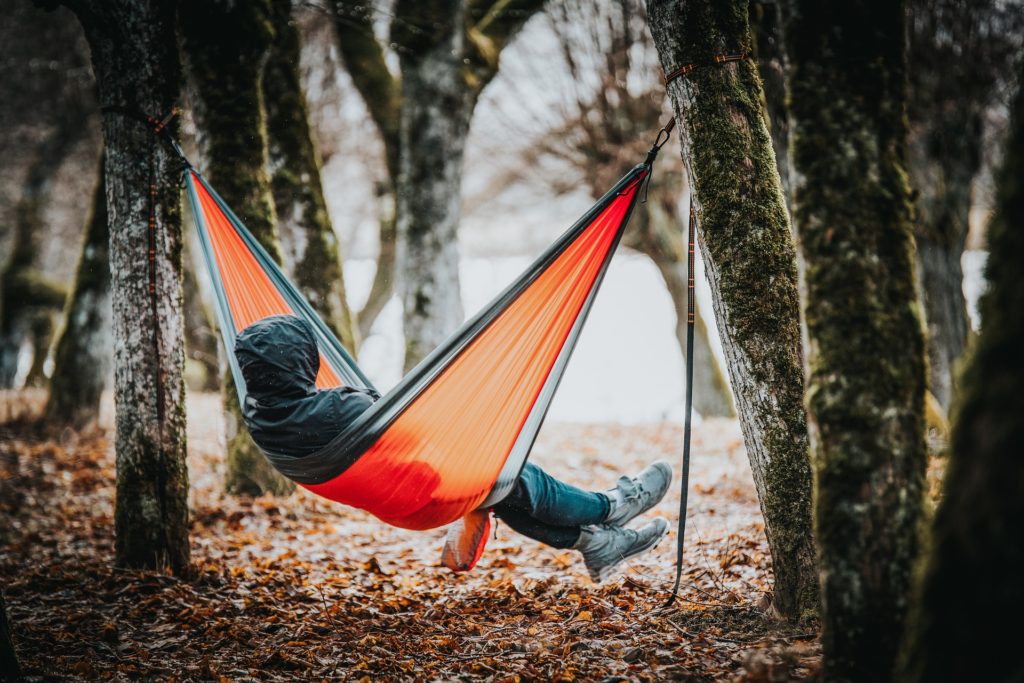
Glad to have found a post that is not being rushed through instead is detailed about how to set up hammock. You get this right and then you will be happy camper.